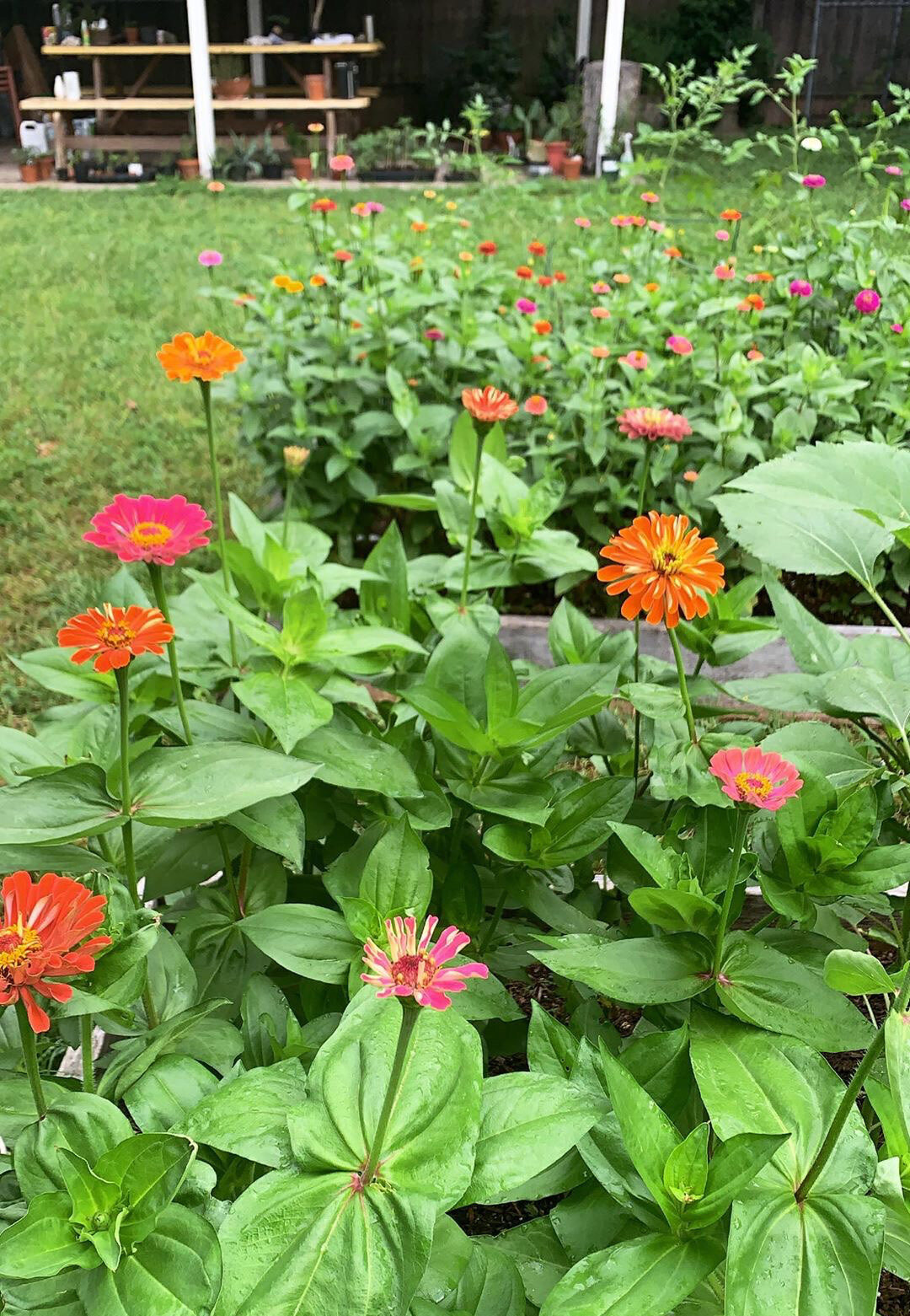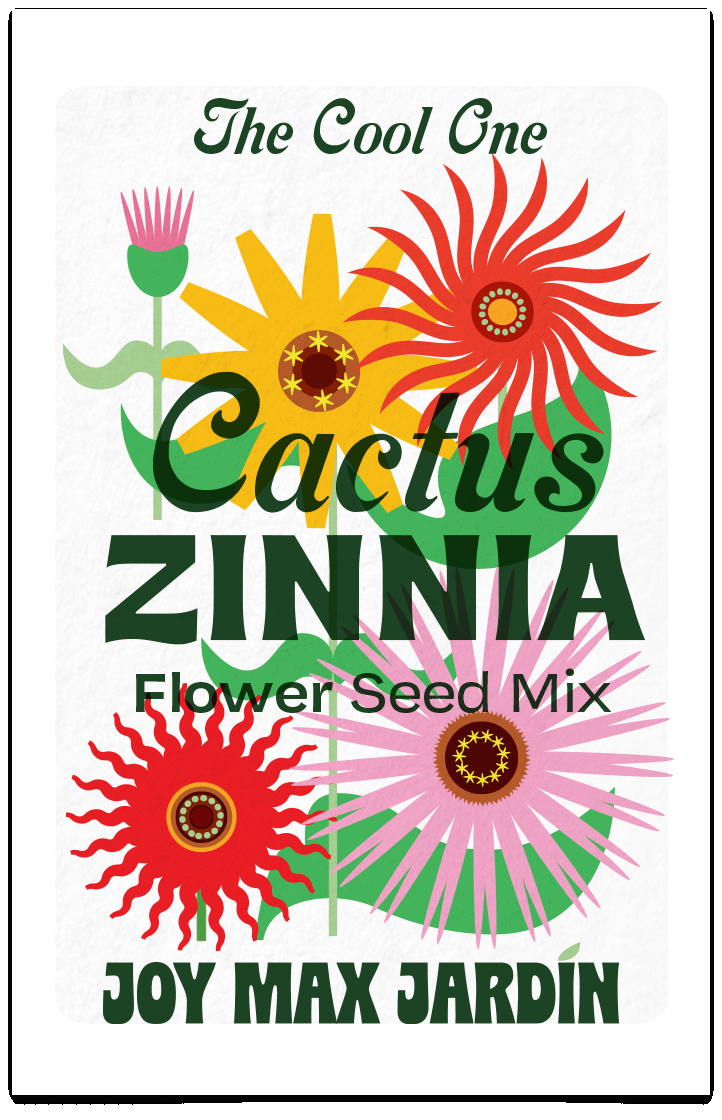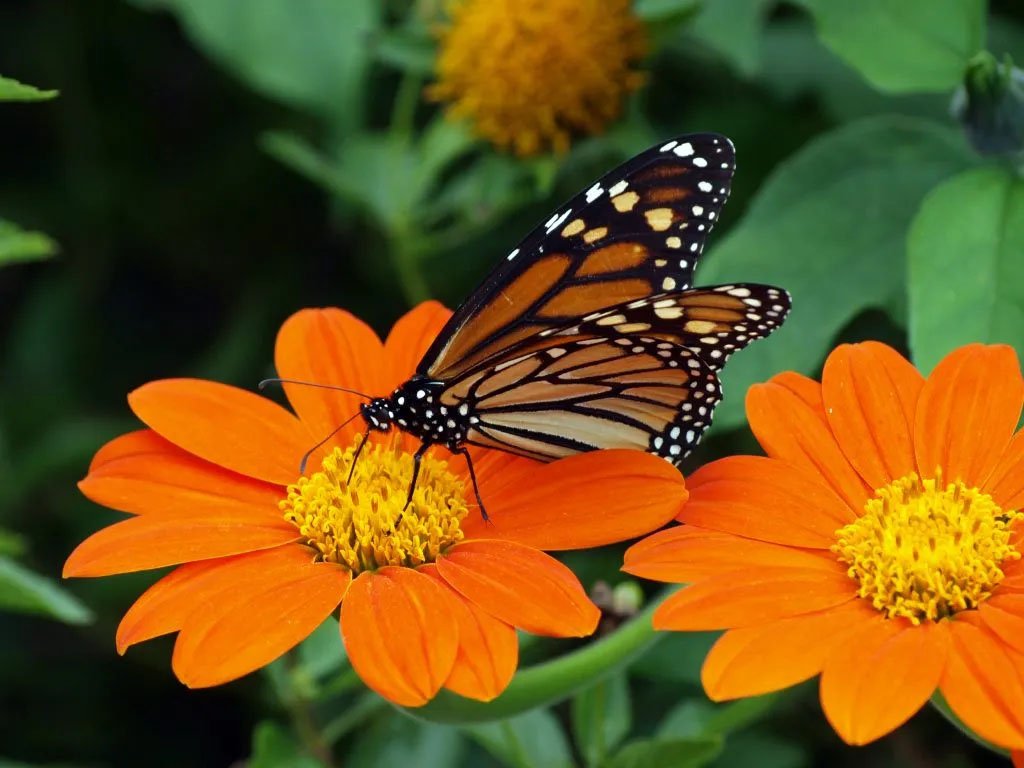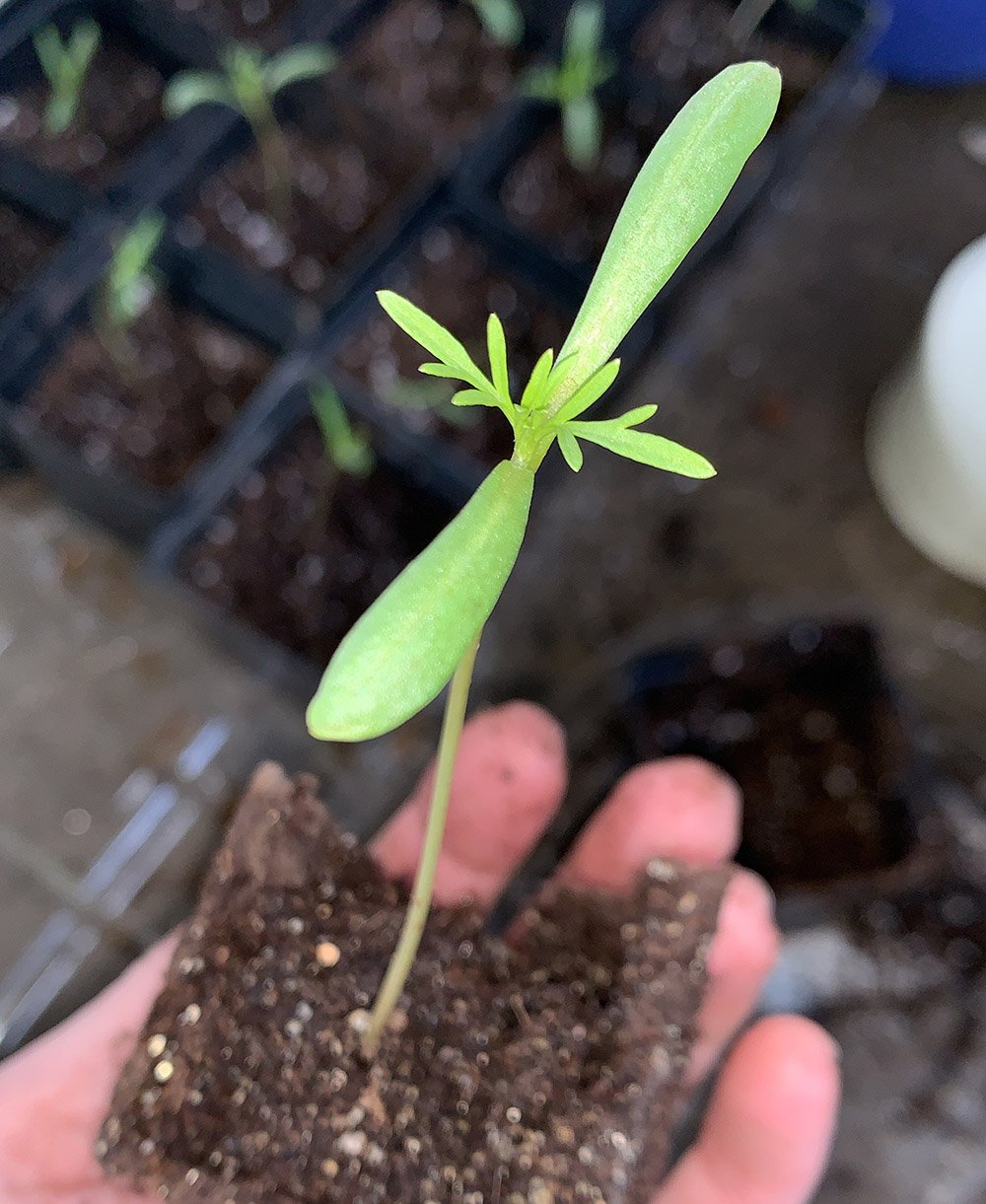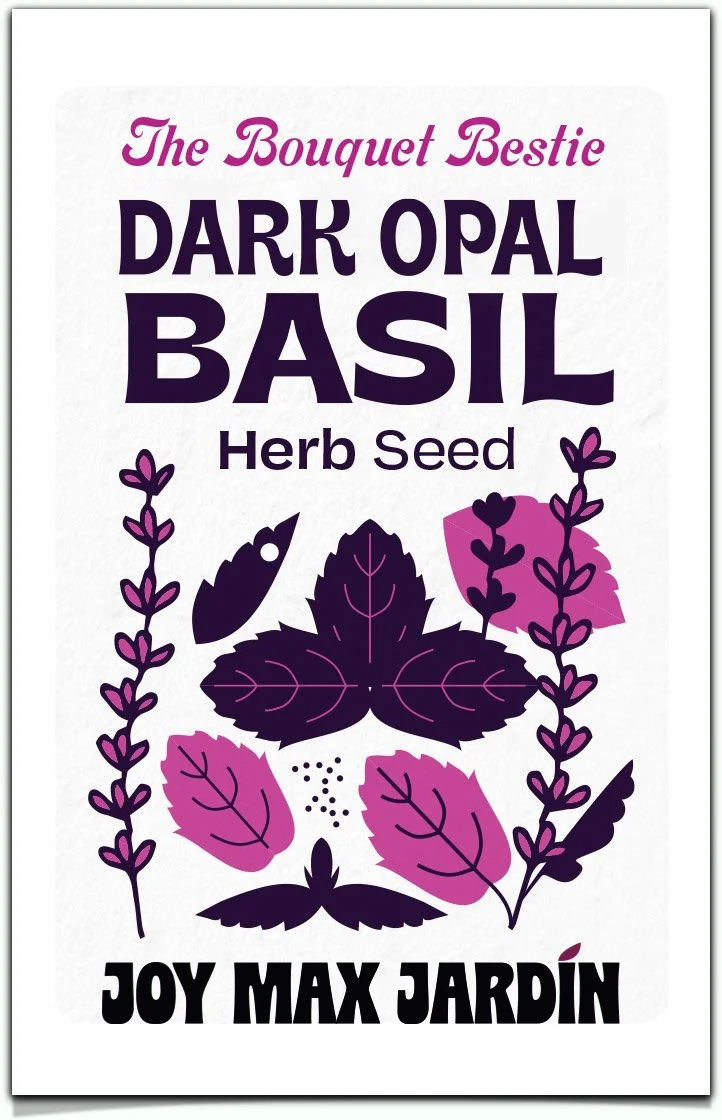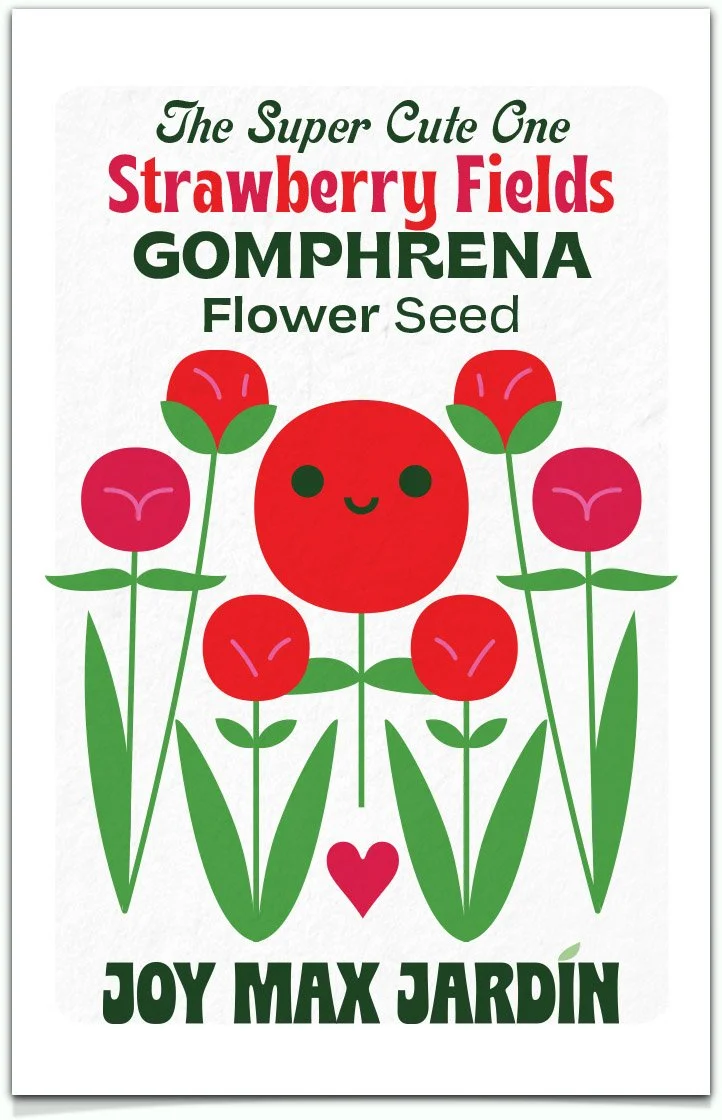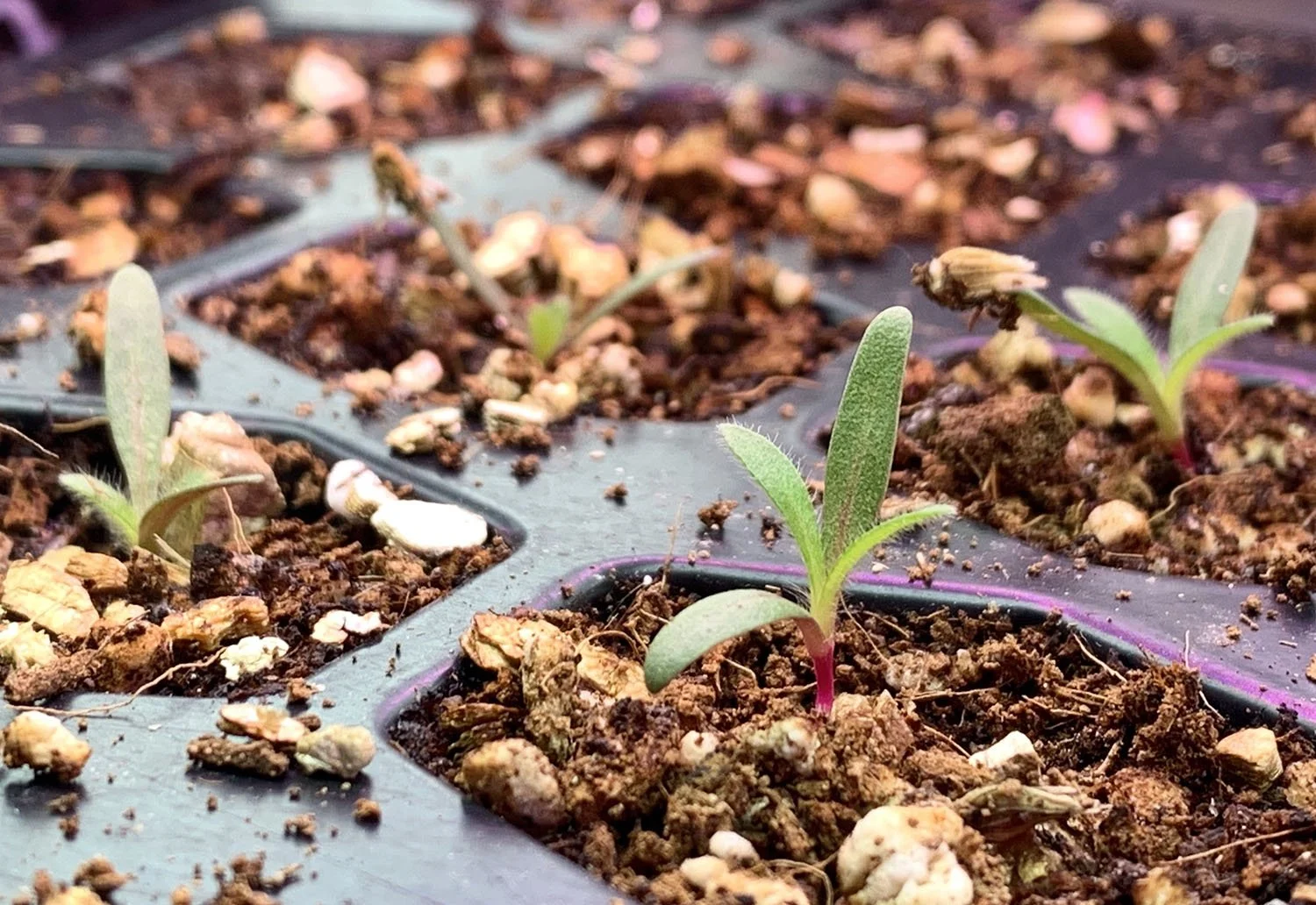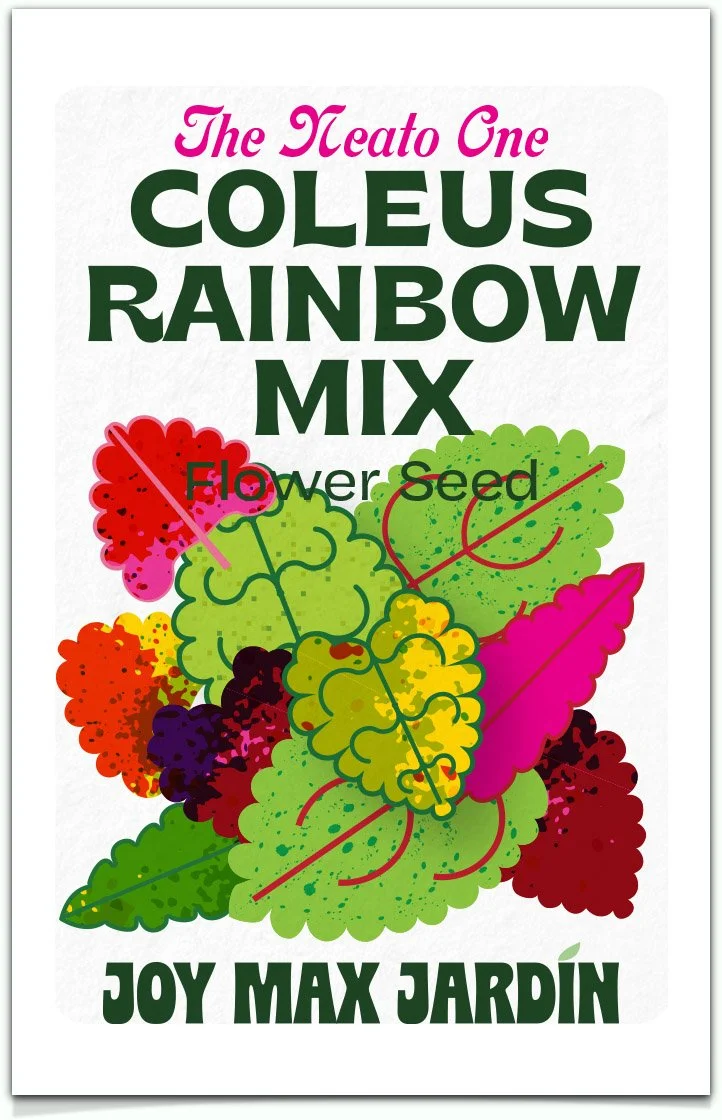How to Grow Big Joy
A guide to growing the cut flowers in your new collection for big beautiful bouquets from late spring until first frost.
All of these flowers like it hot. Here’s a guide to how & when to plant your seeds. ✿
Almost all of the seeds in this collection can be direct sown outside once it gets warm. For some of them though, you’ll get much better germination (meaning they sprout into seedlings) if you start them inside. If you’ve never done it before, don’t worry. These flower seeds are very forgiving. Just make sure to harden off your seedlings outside (by gradually introducing them to more and more direct sunlight every day) for about a week before setting them out in the garden.
Benary’s Giant Zinnia
Zinnia elegans
The show-stopping royalty of the summer garden. This is a seed mix from a famous German seed company in twelve possible gorgeous colors. So easy to grow you will be a fan for life.
OPEN-POLLINATED
GROW ZONES: 3-10
SEED DEPTH: After last frost, sow 1/4-1/2" deep or start indoors in bio pots using a heat mat and grow lights to speed germination. Be careful not to disturb roots when transplanting.
GERM: 3-5 days at 80-85°F
SOIL: Fertile soil rich in organic matter. pH: 6.3-6.8 preferred.
SUN: Full sun although in Texas and other places with super hot summers, they will benefit from a little afternoon shade.
MATURE SIZE: 4-6' x 1' Give them a prominent spot in the garden. Either in the border or as a full row. They'll make so you happy.
SPACING: 12-16". Crucial to give them this space for airflow to suppress downy mildew.
DAYS TO MATURITY: 75 - 90
Zinnias are like the gateway drug to growing flowers. You will be amazed at how easy it is to grow something so truly spectacular and you’ll never want to go a summer without them.
My advice with the zinnias is to start half of your seeds inside and I save the rest to direct sow outside when the daytime temps are over 70° and the nighttime temps are no colder than 60°. Or if you want to just wait to sow all of them outside, that’s fine too. They take off and grow very quickly. You can stagger the planting out every two weeks-that way you always have some fresher zinnias as the older foliage starts to look a little raggedy as the summer progresses. That makes no difference to your bouquets though as you should remove all the leaves when you cut them for bouquets. The blooms continue to stun all season long. When starting them indoors, I like to use those little biodegradable planters for zinnias so you can plant them straight out in the garden without disturbing their roots. If the seedlings’ roots are disturbed, double-blooming dahlia-looking varieties may only produce single blooms. Not a tragedy but still; we want those awesome double blooms. I peel the sides off the little pots as I plant them out (they will suck moisture away from the roots if you plant them) and then water them in well with a little seaweed or fish emulsion to reduce transplant shock.
Benary Giants have punchy bright colors.
Cactus Flowered Zinnia
Zinnia elegans
OPEN-POLLINATED
GROW ZONES: 3-10
SEED DEPTH: After last frost, sow sow 1/4-1/2" deep or start indoors in bio pots using a heat mat and grow lights to speed germination. Be careful not to disturb roots when transplanting.
GERM: 3-5 days at 80-85°F
SOIL: Fertile soil rich in organic matter. pH: 6.3-6.8 preferred.
SUN: Full sun although in Texas and other places with super hot summers, they will benefit from a little afternoon shade.
HEIGHT: 28–40" Not as tall as Benary's.
SPACING: 10-12". Crucial to give them this space for airflow to suppress downy mildew.
DAYS TO MATURITY: 75 - 90
Direct sowing zinnia seeds is very easy and very satisfying.
The cactus aren’t as tall as the Benary’s but can reach almost four feet. Keep that in mind when you choose where to plant them. You can space them a little closer, 10”. I’ve written a comprehensive guide to growing zinnias so you can get all my tips here:
Teddy Bear Sunflower
Helianthus annuus ‘Teddy Bear’
This dwarf sunflower only grows to 3'-4' feet tall but produces tons of giant, fuzzy blooms that are 5-6” across. Great planted in front of taller sunflowers in the garden or grown in big containers.
OPEN-POLLINATED
GROW ZONES: 4-9
SEED DEPTH: Sow after last frost in groups of 3-4 seeds, 1/2" deep, 12" apart. Thin to one plant when true leaves appear.
GERM: 7-14 days at 70-75°F
SOIL: Light, well-drained soil of low to moderate fertility.
SUN: Full sun
MATURE SIZE: 36-48." If their container is small, they will be small too.
SPACING: Space plants 12" apart so that leaves do not touch. Crowding promotes taller growth and weaker stems.
DAYS TO MATURITY: 65 - 70
Sunflowers are one of the easiest flowers to grow but are difficult to transplant. For that reason, sow seed directly into prepared garden soil once all threat of frost has passed. They are heavy feeders, so prepare the soil with lots of manured compost prior to planting. Direct sow when temps are around 70º, 1/2” deep, 12-18” apart. Pinch to create sturdier plants.
Because Teddy Bear Sunflowers produce so many flower petals, they are good for sprinkling over salads in the summer. The petals are completely edible. At the end of the season, you can harvest the edible seeds, either for planting next year or roasting for a tasty snack.
Teddy Bear sunflowers don’t grow as tall as other
JOY MAX SUNFLOWER TIPS
• Water deeply but infrequently to encourage deep, strong roots.
• Protect from squirrels! This will be the most frustrating part of growing sunflowers. I keep a birdfeeder full all summer to attract them elsewhere. Consider placement where you can watch them from a window.
• Pollen is an issue with sunflowers in arrangements, as they can ruin a tablecloth with a yellow mess. Teddy Bear is a low-pollen, but not pollen-less sunflower. Varieties with the words “Procut” are bred to reduce pollen.
• Make sure you know where the sun is when planting sunflowers. Many varieties follow the sun with their blooms, so if planted in the wrong location, they may face your neighbor’s side of the fence instead of yours.
• To prolong vase life, cut as soon as the first petals on a bloom start to unfurl, and strip the bottom 3/4 of the leaves from the stem. No flower food is necessary.
Mexican Sunflower
“Torch” Tithonia
Tithonia rotundifolia
This easy-to-grow orange powerhouse comes on late in the season just in time for migrating Monarch butterflies who love it. Great for mass plantings in unloved parts of the garden as it doesn’t need especially good soil.
OPEN-POLLINATED
GROW ZONES: 4-9
SEED DEPTH: Surface sow when temps are warm. Thin to one plant when true leaves appear.
GERM: 7-14 days at 70-85°F
SOIL: Loamy or sandy, well-drained soil of low to moderate fertility. Too much nitrogen will reduce blooms.
SUN: Full sun
MATURE SIZE: 60-72" They get very tall and bushy. Plant in the way back or as a summer hedge.
SPACING: 12-24"
DAYS TO MATURITY: 85-90 Days
Direct seeding is best. After last frost. Sow once soil temperature is 70-85°F. Barely cover seeds as light is required for germination. Tolerates poor soil. Flowering doesn’t occur until late summer but then it puts on a big orange show. Harvest flowers for cut bouquets when they are 90-100% open. Stand in deep, warm water for several hours. Deadhead plants to prolong flowering.
Mexican Sunflowers are an important nectar source for migrating Monarch butterflies.
Versailles Mix Cosmos
Cosmos bipinnatus
A garden classic! Cosmos grow quickly and easily in poor soil producing airy, daisy-like flowers in a range of pink jewel tones and clouds of attractive, delicate foliage.
OPEN-POLLINATED
GROW ZONES: 2-11
SEED DEPTH: Surface sow, needs light to germinate.
GERM: 5-10 days at 68-72°F
SOIL: Poor soil with good drainage
SUN: Full sun
MATURE HEIGHT: 40–48"
SPACING: 9-12". Wider spacing creates stronger, thicker stems.
DAYS TO MATURITY: 65-110
Plant in poor soil in full sun for best flowers. Direct sow outside once all danger of frost has passed. Surface sow & keep soil moist until germination. When 1–2" tall, thin to 12" apart. Use netting or make a grid with twine and stakes to keep from flopping over as they can grow over 4' tall. Cut flowers when bud is just about to open for longer lasting bouquets. Deadhead spent blooms to keep flowers coming.
Cosmos can be started inside and set out or easily direct sown outside once temps are warm.
JOY MAX COSMOS TIPS
• Don't plant these in your vegetable beds. Rich soil will cause the stems to grow thick but not produce flowers.
• Keep seeds moist until germination,and seedlings and young plants moist but not wet until established, but then water only when it looks thirsty. Protect from slugs and snails at this stage as seedlings are quite tender.
• While cosmos will grow and bloom in part shade, you will have drastically less flowers than those planted in full sun.
•“Pinch” to increase branching (the number of stems and flowers produced). When plants are between 8-12” tall, use your thumb and index finger or sterilized scissors to remove the growing point.
• They will need some support to protect from the wind. The easiest way to do this is to set up some netting above the seedlings so they can grow up through it as they get taller.
• Do not fertilize. It will cause the same issues as planting them in too rich soil.
• To prolong their flowering time, keep cosmos harvested regularly, and deadhead any spent flowers before they set seed. The individual blooms of cosmos don’t last a particularly long time in the vase, about 4 to 6 days, but each stem is loaded with multiple blossoms that open individually over a period of a week.
• Harvest when the buds are colored but haven’t opened up yet; this will keep insects from pollinating them and help stretch the vase life by a few additional days.
Supercrest Mix Celosia
Celosia argentea var.cristata
This Celosia Mix grows to be very tall and produces a mix of velvety and feathery flowers in a range of strange shapes and neon ombre colors. It thrives even in the hottest, dryest conditions.
OPEN-POLLINATED
GROW ZONES: 3-12; perennial in 9-11 - they love the heat
SEED DEPTH: Barely cover, it's good just to scatter vermiculite over the seeds whether direct sown or started indoors
GERM: 10-15 days at 80-85°F
SOIL: Rich but sandy, moist, well-draining soil is crucial
SUN: Full sun; they have no trouble but can take a little shade
MATURE SIZE: 36-48"
SPACING: 12-18"
DAYS TO MATURITY: 90-110
Once you’ve grown celosia, you know that it’s easy to direct sow in the garden because at the end of the season, new babies start popping up everywhere since the plants throw seeds like crazy. The tricky bit is that celosia is tropical, so the soil temp has to be quite warm for seeds to germinate. It’s better to start them indoors in bio pots and then transplant them outdoors when they are 4-6 weeks old. Surface sow three or four seeds in bio pots and barely cover either with vermiculite or a dusting of more seed starting medium. Cover the pots with plastic wrap or a humidity dome and put on a heating mat until the seeds germinate- 10 to 15 days. Spritz with room temp filtered water to keep the potting mix uniformly lightly moist. Remove the plastic daily to let the plants breathe and entirely once half the seeds have sprouted. Don’t transplant outside until it’s decidedly warm. Remember, these are tropical plants.
JOY MAX CELOSIA TIPS
• Keep new garden seedlings pretty moist until they take off. Once established, they don’t need nearly as much water. I usually see the saddest celosia in containers, so be careful not to over-water as root rot happens a lot easier in a pot. If you plant in the ground, in well-drained, sandy soil, they will do great and require very little assistance from you. They only need about an inch of water a week and do great in the hottest summers.
• “Pinch” to increase branching (the number of stems and flowers produced). When plants are 6–12” tall, use your thumb and index finger or sterilized scissors to remove the growing point.
• Celosia is exceptional as a cut flower and can be used both fresh and dried. Fresh: Harvest when the flowers are fully developed, and stems are firm at the base of the bloom. Pick flowers when they are the size you want as they will keep growing. Strip most or all of the foliage off when you harvest them as the leaves won’t last as long as the flowers in the vase. Dried: Harvest at the same stage of growth as you would for fresh flowers. Remove all the foliage and hang in a dark, well-ventilated location to dry for 2 weeks or until firm to the touch.
These are young celocia flowers. As the plant matures, the flower heads get bigger, growing into large fan-shaped plumes. Pick when they are the size that you want, but before they go to seed or they’ll drop seed everywhere the bouquet goes. You can also easily dry these flowers for gorgeous everlasting arrangements.
Dark Opal Basil
Ocimum basilicum
AAS winner. Fast-growing ‘Dark Opal’ is almost black and looks stunning mixed with vibrant colors. It has a warm, clove-like scent and a mild, earthy flavor. This heat-loving foliage is a wonderful addition to summer bouquets.
OPEN-POLLINATED
GROW ZONES: 4-10
SEED DEPTH: 1/4” deep, 4” apart. Firm the soil over the seeds. Thin to a final spacing of 9-12” apart to produce healthy, full plants.
GERM: 5-10 days at 65-70°F
SOIL: Moderately rich, moist soil. Not drought tolerant.
SUN: Full sun although in Texas and other places with super hot summers, they will benefit from a little afternoon shade.
MATURE SIZE: 16-18”
SPACING: 4-8"
DAYS TO MATURITY: 70
When you think about a cutting garden, it’s important to include seed selections that fill out the bouquets you fill with your big flowers.
Dark Opal Basil will supply a dark contrast to the bright colors of the zinnias and sunflowers. Slightly ruffled plants are mostly a deep dark purple, with 10% variegated or all green for a great color combo. You can also garnish meals with the leaves and blooms. So beautiful and easy to grow.
Basil seedlings have a distinct shape right out of the gate. They are easily sown directly into the garden.
Direct seed (the easiest way): Plant in spring when the night temperatures consistently stay above 50º F. Plant seeds 1/4” deep, 4” apart. Firm the soil over the seeds. Thin to a final spacing of 9-12” apart to produce healthy, full plants.
Transplant: Sow indoors 6 weeks prior to setting out. Plant 1/4” deep and keep at 70º for best germination. Transplant to the field when seedlings have 3-4 sets of leaves. You can also start these in a fruit container and pluck them out into the ground if you find that easier than direct sowing.
JOY MAX BASIL TIPS
• Plant basil among other herbs, flowers, and vegetables with similar lighting and watering needs, like tomatoes, peppers, zinnias, lettuce, or parsley. Some say tomatoes taste better when they neighbor basil.
• Basil is not drought tolerant and can be damaged by heat stress. Regular moisture throughout the growing season helps to ensure a good crop.
• When they reach around 8-9” tall, pinch out the central growing stem. This will encourage the side shoots to leaf out and keep the plant from blooming too quickly.
• Harvest when stems begin to toughen and firm or as soon as flowers begin to form. Cut flowers & foliage in the early morning when the temperature is cooler and the leaves are less likely to wilt. Place directly into water to rest a few hours before arranging. Stems will last 7-10 days, often rooting in the vase.
• That means it’s easy to propagate! Share plants with your friends.
“Strawberry Fields” Gomphrena
Gomphrena haageana
Gomphrena are the happiest little gumballs. The trickiest part of growing them is getting them started. Once they get going, they are drought tolerant, trouble-free, and even edible!
OPEN-POLLINATED
GROW ZONES: 3-10, perennial above zone 9
SEED DEPTH: Surface sow, needs light to germinate. Good to start inside and then move outside after 5-6 weeks. Keep well watered until they take off, then only when they look thirsty.
GERM: 7-21 days at 70-78°F (21-26°C)
SOIL: Nothing special but well-drained
SUN: Full sun
MATURE SIZE: 18-28" x 6-12"
SPACING: 6-10". They sprawl quite a bit and it's okay if they overlap
DAYS TO MATURITY: 85 - 100
Gomphrena (globe amaranth) is native to Texas and Mexico. Once you get them going, the work is over and the sweetness begins.
Surface sow seeds and just cover with a little vermiculite. That will help keep the surface moist but not block the light they need to germinate.
A mass planting is a sight that will bring you joy every time you set your eyes on it. I highly recommend planting them along a path or a drive where you will see them every day. You don’t necessarily have to plant them in the garden with everything else since you will not have to water them very often. They are the sweetest bouquet filler and they’ll stay perfect in the vase for at least a week. Harvest when flowers are in color but before fully open. You can extend the bouquets into winter by drying them. To dry, harvest when flowers are completely open. Cut the stem at the desired height, trim off any foliage, and hang the flower upside-down in a well-ventilated, dry, somewhat cool location for 2-3 weeks until dry and stiff. Dried flowers are fragile; handle with care.
Gomphrena seeds are fuzzy and flat. They need light to germinate and it takes them a while to do it. That means there’s a lot that can happen to them before it happens. They can wash away in the rain, birds could eat them. That’s why I like to start them inside under constant grow lights and on a heat pad until they sprout. They will still be very small when you transplant them out, but as long as you harden them off for a week and then baby them a bit after planting they’ll be fine. Just water them in with seaweed and protect them from squirrels. They’ll soon take off and you can forget all about them until one day, they bloom and you die with cuteness overload.
JOY MAX GOMPHRENA TIPS
• The more you cut it, the more it blooms. Makes a stunning addition to bouquets or all on its own, fresh or dried.
• Pinch off wilted gomphrena blooms, as deadheading keeps gomphrena neat and tidy and prevents the plant from going to seed too early. To deadhead, pinch the faded bloom with your fingernail. Include the attached stem down to the next bloom, bud or leaf.
• After periods of very wet weather, you may have trouble reviving downed plants. You can cut off any limp stems and try to get its stability back to get going again once it's dried out a bit.
Coleus Rainbow Mix
Plectranthus scutellarioides
Exotic, wild-colored paint-splashed leaves. Spectacular for beds, borders & bouquets. This one you can plant in the shade, propagate easily, and even grow as a houseplant.
GROW ZONES: 3-10, perennial above zone 9
SEED DEPTH: Surface sow, needs light to germinate. It's best to start seeds indoors.
GERM: 10-15 days
SOIL: Nothing special but well-drained, coleus needs lots of moisture
SUN: Morning sun to full shade
MATURE SIZE: 15x20" x 10-14"
SPACING: 8-12"
DAYS TO MATURITY: 60-90
Coleus may be a little slow to get started but just wait for it. Watching these little sprouts slowly grow into little, wildly-colored mounds and then lushly filling out whatever beds or containers you put them in will be a true delight.
It’s best to get these started inside since it takes a while to get them going and they don’t germinate in anything less than 70º. Use a heat mat and grow lights. Press a few seeds into the soil surface of each cell or pot. When 1" tall, thin to just the cutest one. Set outside once they are at least 3” tall and the days are consistently warm. Space 8-12” apart.
Ruby Moon Hyacinth Bean
Lablab purpureus
Stunning vine with purple stems, lilac-rose blossoms, and shiny 2–3" magenta pods. Gives fabulous color & magic all season.
OPEN-POLLINATED
GROW ZONES: 2-11, Perennial in zones 10 and warmer
SEED DEPTH: 1" deep, 6" apart. Thin to 12" apart when 2" tall.
GERM: 3–30 days depending on heat
SOIL: Poor soil with good drainage
SUN: Full sun to part shade
MATURE sise: 10'–20 vine
SPACING: 9-12". Wider spacing creates stronger, thicker stems.
DAYS TO MATURITY: 65-110
There’s really no part of this plant that isn’t just beautiful to look at. Disguise an ugly fence or dead tree with the 15’ vines.
Once temps are consistently warm: 1 to 2 weeks after your average last frost date, and when soil temperature is at least 65°F, ideally 70°–85°F, direct sow a group of 2 seeds 1” deep every 12" or 1 seed every 6” in good sun where the vines can climb. When 2" tall, thin to 1 every 12". Successive sow every 7 to 14 days until temps get closer to 90°. Used in Asian, Thai, and Indian cuisine. While all parts of the plant are edible, they contain toxins and must be boiled twice if eating. Probably a better idea to save them for next year.


